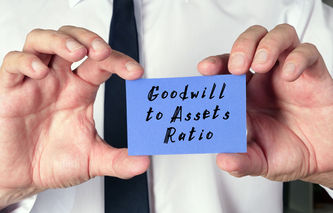Definition
The term investment turnover ratio describes a calculation analysts can use to determine how efficiently a company's debt and equity produces revenues. Higher investment turnover ratios equate to more efficient companies.
Calculation
Investment Turnover Ratio = Revenues / (Stockholders' Equity + Debt)
Where:
Debt includes both long and short-term debt.
Explanation
The investment turnover ratio tells the investor-analyst how effectively a company uses its resources to generate revenues. Generally, companies can raise capital in two ways: they can issue shares of common stock, and they can borrow money. Shareholders' equity consists of both the original funds raised by companies when they issue common stock as well as any retained earnings (or profits). Debt consists of money borrowed from creditors, which includes both long and short term securities.
As is the case with metrics like inventory turnover, investment turnover measures how many times a company "turns over" the money invested in the company. As the ratio increases, so does a company's ability to generate revenues.
Keep in mind this metric measures the revenues of a company, not its earnings (or profits). A company can generate a lot of revenues and still not generate any profits. As is the case with most metrics of this type, the ratio should be measured over time and benchmarked against companies in the same industry.
Example
Company A has approached a small group of investors, hoping to raise additional capital to expand operations and generate additional revenues. Analysts were brought in to support these investors and one of the metrics they evaluated was Company A's investment turnover ratio. The results of their analysis appear below:
Year 1 | Year 2 | Year 3 | Year 4 | Year 5 | |
Sales Revenues | $28,610,000 | $30,030,000 | $31,830,000 | $34,060,000 | $36,780,000 |
Stockholders' Equity | $4,968,425 | $4,869,057 | $4,771,675 | $4,676,242 | $4,582,717 |
Long-Term Debt | $3,115,000 | $3,052,700 | $2,991,646 | $2,931,813 | $2,873,177 |
Short-Term Debt | $1,401,750 | $1,373,715 | $1,346,241 | $1,319,316 | $1,292,930 |
Investment Turnover Ratio | 3.0 | 3.2 | 3.5 | 3.8 | 4.2 |
The analysts also calculated the investment turnover ratio for Company A's peer group, which provided a benchmark value of 2.9. Based on the above information, along with gross profit margins, the investors concluded Company A was a well-run business.



